Beyond the Farthest Suns Read online
Page 2
“Besides,” he continued, “your weapons are registered whenever fired, in defense or otherwise, and the situation is recorded in stasis memory. You can’t get around that. We’ll have you on the carpet if you do anything that can’t be strictly considered defensive.”
“I’ve never been able to figure out a bureaucrat,” Anna said. She sighed and picked up her silk duffel bag to leave. “I’ve never used my weapons. Ever.”
“Garden tools, once,” Kiril reminded her.
She stared at him, shocked that he would mention that.
“I’m frightened, Anna,” he said. “Very frightened. The fates of individuals mean nothing in this kind of dispute.”
She took a transit tube beneath the modular city as any pedestrian might have, nothing more than an old woman. In her bag she carried several pictures of young men, one of whom attracted her very much. She glanced at them several times as she rode, trying to lose herself in reverie and allow her limbic mind to feel its way through to an action. Gut-level thought had carried her through crises before.
She picked out one photograph and tapped it against her cheek as she left the tube at an underground terminal. She walked below the Myriadne starport, largest on Tau Ceti II. Shuttles landed and departed dozens by the hour overhead, smooth bronze and silver bullets homing for their mother ships.
One such bullet, small and utilitarian, waited for her. She rode a wheeled maneuvering tug out to it.
In ten minutes, she was off-planet, riding in her spare personal quarters, surrounded by a detailed projection of the journey.
Disjohn Fairchild was an intelligent man. He would already be implementing some of the suggestions Kiril had made. They were the only outs he had for the moment, with or without her help. She calmly analyzed her own reaction to the suggestions, watching sun, planets and stars form a glittering bow around her ship. Then she smiled grimly and went to sleep as the stars winked out.
When she came awake three hours later, dark still surrounded her. It grew muddied and started to take on form. There was a queasy moment, a tiny shiver, and the outer universe returned. Occasional wisps of color appeared and vanished streamer-like along the forty-five degree rotated starbow.
She began to wonder what Kamon had meant by the reminder that his kind had no juvenates. She went to the ship’s library to do research. On her way, she lifted the photograph to a ship’s eye and told it, “Him.”
They would pick up the young man at Shireport.
Edith Fairchild grew tired of the viewscreen’s translation of what was happening outside the ship. She frowned and closed her eyes, trying to wipe her mind clear for a moment. The books in front of her ghosted and darkened, and she swam in a small red sea of interior designs.
After a moment, she no longer thought in words, and pictures came to her clearly.
Three large, very fast starships all moved across hyperspatial geodesics toward a common goal. They left tracks—she could see them in an allegorical fashion—in amorphous higher geometries. They were aware of each other’s presence and direction.
One belonged to Anna Sigrid Nestor. Edith wondered what this woman’s purpose might be, beyond friendship. Nestor and Disjohn had communicated briefly a few hours before, and Disjohn had told her to leave well enough alone.
But Edith was sure she wouldn’t.
One ship carried a being not classifiable in terms of terrestrial biology, having aspects of many phyla. Kamon was called “he” by default—a cultural tendency to view the convex sexual form as male. But Kamon was neither male nor female in the reproductive process of his kind. He gestated young. His children, by human standards, were not his children.
His neurological make-up differed radically from a human’s. The arrangement of his nervous system was central, not dorsal. He had three brains spaced around his esophagus. One of his brains was an evolutionary vestige, in charge of autonomic and emotive functions. Very powerful in influence despite its size, it connected with the two other portions by fibers substantially larger than any human nervous connection—networks of medullae, each marvelously complex.
He could contemplate at least four different things at once while involved in a routine action. While driven by what humans might consider a mania, the Aighor could think as rationally as any calm human. He was a dangerous enemy, highly motivated. In this match, Kamon had the upper hand. He would know everything they had planned—with benefit of manic certainty and calm intellection—and he’d act without hesitation.
But Kamon was not supernatural. They could elude him. They could survive him.
Perhaps Sigrid-Nestor could help by distracting him. There was at least hope, and perhaps even a good chance. So why did she feel so dark inside, and cold?
She closed her books, stood up slowly from the table, and went to join her husband on the bridge.
“A ship riding protogeometry has three options in case of attack,” Graetikin, the captain, was telling Disjohn as she entered. Graetikin nodded at her and continued. “It can drop into half-phase, that is, fluctuate between two geometries …” His finger lightly sketched an equation on the tapas pad. “Or drop into status geometry, our normal continuum. Or it can dispatch part of its mass and create pseudo-ships like squid’s ink. This happens to some extent during any transfer of geometries, to satisfy the Dirac corollaries, but the mass loss is extremely low, on the order of fifty or sixty trillion atomic units, randomly scattered.”
“What about protection from shields?”
“Shields only operate in status geometry. They’re electromagnetic and that implies charge-holes in hyperspatial manifolds.”
“It would have been easier if we’d had a few Crocerians,” Fairchild said wistfully. When the ship had put in at Shireport, all the Crocerians he’d asked had politely refused, not wishing to gamble, or, if gambling, betting on the Aighors. The Crocerians were a pragmatic species.
“I’d never fight Aighors if I could avoid it,” Graetikin said. “I would avoid it by not having them challenge me.”
“We’re forced to take that risk.”
“It’s up to you. Once committed to a protogeometry vector we can’t back down.”
“How far ahead of us is he?”
“About four light-hours, following a parallel course.”
“How much of a jump can we get if we take one of these protogeometries?”
“He’ll learn about our jump about a tenth of a second status time after we make it. That gives us a good hour or two at the other end of the pierce.”
“They might take that as an affront,” Disjohn said, looking at Edith.
“Why, for God’s sake?” Graetikin said. “We’d have to jump into some manifold or another anyway.”
“Protogeometry jumps are a waste of energy, unless one wants to gain a certain advantage.” Fairchild pushed away from the anchored chair and drifted across the cabin. “Cat and mouse. If I give any clue that I think they’re after me, they’ll interpret it as a cultural insult. Kamon won’t miss a trick.”
Graetikin shrugged. While talking about things that could mean life or death, he had doodled an equation among the others on the tapas. He had been working on this problem in his head for months, unaware he was so close to a solution. His eyes widened.
He had just described what the Thrina were in terms of deep proto-geometries.
He quickly branched off with another equation, and saw that in any geometry outside of status—any universe beyond their continuum—the Thrina would be ubiquitous. That, he thought, did qualify them for godhood somewhat.
He would transmit the equations and solutions to Precipice 5 when he had a chance, and see what they made of it. But for the moment, it wasn’t relevant. He folded the tapas and put it into his shirt pocket.
“We’re four light-days out from Shireport, and sixty parsecs from
the Ansinger systems. We made it to Shireport without harassment, and that makes me suspicious. So far we’ve only been tailed.” Graetikin turned to look at Fairchild floating on his back in mid-air. “They’re usually more punctual.”
The Aighor captain lay against the wall with his throat and three brains smashed flat. He managed a final gasp of query before Kamon pressed the slammer button again and laid his head out. The thorax and tail twitched and the arms slowly writhed, then all motion stopped. Kamon’s mate-of-ship huddled against the back of the cabin and croaked tightly, regularly, her face black as blood with fear. Kamon put the slammer down and sent his message to the Council at Frain.
“The diplomatic team has caused damage to the Venging,” he said.
The hazy, distorted image of the Auspiseer chided him for his vehemence. “They have called the meeting at Precipice 5 partly for your advantage,” the Auspiseer said. “The human Fairchild’s ship has been notified en route to Ansinger, and he cannot refuse.”
“But I have already missed several chances to attack.”
“The captain’s reluctance to destroy the Fairchild ship was part of his training. You should have been more gentle with him.”
“He is of the governing breed. They’ve become almost human in the past centuries.”
“The Council allowed the meeting at Precipice 5 to be called for a number of reasons. For one, it temporarily eases our relations with the humans. And for another, it puts you in a better position should the discussions be unsuccessful.
“The Council cannot discount your premature release of Captain Liiank, without benefit of pilgrimage. You will execute yourself upon completion of your mission.”
“The release of Fairchild will sanctify the Rift Thrina, and I will take my end there.”
“Wise and good.”
“But I have lost the Fairchild ship now because of the Captain’s reluctance. It will take time to recapture the advantage.”
“What else has offended besides Fairchild?”
“His station.”
“Kamon, you are officially declared rogue. We are not answerable for your actions. We will broadcast suitable warnings to that effect.”
“That is how I’ve planned it, Auspiseer.” He ended the communication and turned to speak to his mate. She had regained her composure and was adjusting her belts of prefertilized egg capsules. “We will gestate no more young,” he said.
The tip of her tail indicated she understood.
“So far, three things have gone wrong with the predictions,” the Heuritex said. “I’ve calculated based on all known constants and variables, all options open, but the trend is against the predicted results. I must remind you that there are large areas of the problem of which I am totally ignorant, making the model inadequate.”
“In short, you’re useless,” Anna told the machine.
“That is as it may be.”
“I should replace you with my gigolo.”
“He’s a handsome bastard, I’ll say that for him.”
“What if we assume that Kamon is going to behave erratically, say, deranged by being denied an afterlife?”
“We have more options.”
“Then that’s our operating hypothesis. No, wait. Use this—Kamon will behave as if he is deranged, by human standards. I never underestimate opponents.”
“Do you wish that to be an hypothesis, or an assumption? There is a difference, you know.”
“Whichever way it works. You know what you’re doing better than I do, dearie.”
“Incorporated. The resulting future model, still highly inadequate, indicates that the meeting at Precipice 5—course corrected for that destination, by the by—will not take place. The station will be destroyed. Kamon will probably be the destroyer, and the Aighors will claim Kamon has gone rogue to deny responsibility.”
She paced in front of the panel, then asked for gravitation to be reduced and then shut off, and floated at ease. “Warn Precipice 5 to be on full alert when Disjohn arrives.”
“Done.”
“And contact USC, division of Martial Support, at Shireport. Tell them there is going to be a confrontation in the Pafloshwa Rift, coordinates unknown.”
“Such an action will mark you as a rogue agent as well,” the machine said, a speculative tone in its voice.
“Whatever for?”
“It indicates a willingness to engage in battle, since you are heading toward the Rift of your own free will.”
“Not exactly my free will. USC doesn’t know I’m aboard this vessel, so they’ll assume—will have to assume, and believe me are smart enough to assume—that whoever advises the Captain is not playing with a full deck of cards.”
“I advise the Captain.”
“I will have you overhauled when we get back to Ansinger.”
“That will be a good time to install the new Parakem function modules. Where are you, since you’re not here?”
“On Tau Ceti II. I made an appointment with Jessamyn Negras for a business talk, and she hates me enough to keep me waiting for at least a month. She will refuse to believe anyone would miss out on the blessed chance to talk to her. And appropriately deluded recorders are going at all times in my apartments. I’m there, that’s certain.”
“I see,” said the Heuritex.
Kamon regretted killing the captain before learning all there was to know about ship operation. The Aighors who crewed the vessel were all competent in their special tasks, and the computers were helpful, but an overall cohesion was, if not lacking, at least shaky.
Kamon absorbed the captain’s library rapidly. He was gratified to know an Aighor pilgrimage fleet was forming on the borders of the Rift. His kind cheered him on, and the government—diplomats and rulers alike—had not yet sent a ship to stop him. It would be useless if they did.
Coldly, precisely, he figured where difficulties would arise. First would be the protection of Precipice 5—negligible defenses, all things considered. Second would be the presence of Anna Sigrid Nestor, whom of all the humans he had met he most admired. Third—the final battleground would not be Precipice 5. He would have to chase Fairchild across the Rift.
The station would be destroyed before the human ships arrived.
Fairchild’s ship saw the dead ruin of Precipice 5, issued a distress signal on the station’s behalf, and headed at full power for deep space. The ship was away from the major gravitational effects of the small system in hours and shamelessly relied on protogeometry jumps to take it deep into the Rift. It then shut down all activities not connected with life-support, went into halfphase, and laid ghost images across a wide range of continua.
Graetikin silently cursed the Dallat conventions which made all private ships carry nothing more offensive than meteoroid deflection shields. He had spent his first thirty years in space as an apprentice commander in the Centrum Astry, helping to command ships armed to the teeth with all conceivable weapons, from rocket projectiles to stasis-shielded neutronium blocks which, when warped into the center of another vessel, quickly gravitated everything into super-dense spheres. Now he was facing a violent confrontation with nothing more offensive than flare rockets and half-phase warps.
It was like the final charge of an old lion against warriors wielding assegais. Fairchild’s motives and the Aighor’s motives didn’t concern him. Both in their own ways were altruistic and noble, concerned with good tasks. But he was concerned with surviving to captain another ship, or at least continue captaining this one.
He didn’t mind Fairchild’s employ. The man was reasonably sharp and knew how to provide for the upkeep of his ships. If he had the tact of a young bull in dealing with alien cultures, that was usually not Graetikin’s concern.
Between and around these thoughts, he re-worked his equations describing the Thrina. There was a cool
, young hypothesis on the horizons of his mind, and it tantalized him. In reworking the expressions on his notepad, he found four connections with Parakem functions that he hadn’t noticed earlier. These implied that the Thrina, though ineffectual in a cause-effect relation in most geometries, had interesting properties in coincidence-controlled geometries. They could influence certain aspects of status geometry, where cause-effect and synchronicity operated in struggling balance.
He raised his eyebrows.
And that implied something extraordinary…
“There is a good possibility we can contact Fairchild if he chooses to coast free within the next thirty-five hours,” the Heuritex said.
Anna grumbled out of a light doze. “What was that?”
“We can join forces with him at points I have calculated along geodesics meeting in higher geometries.”
“Translate for us mortals, please.” She straightened in her command chair and rubbed her face with her hands.
“I think we can join with Fairchild’s ship before Kamon reaches it. Here is our condition: fifth standard day of flight; all three ships are deep into the Rift. Fairchild is inert, following a least-energy geodesic in half-phase. Kamon is matching the most likely direction of that geodesic, though I’m certain he has no clear picture of the ship’s present position along such a path. We follow Kamon closely. And we are constantly correcting our charts with observations of the Rift pulsars and singularities.”
“Yes, but what’s this about joining Fairchild?”
“His vessel alone is not sufficient to propel itself away from Kamon. He has little or no chance of escape in the long run. But with our two ships linked, we can create a broader affect-beam in protogeometry—”
“You can arrange this in more than just theory?”
“I think so, madame. I can contact Disjohn Fairchild’s ship in a code only it can understand, and arrange for the rendezvous without the Aighor knowing.”
“You’re a maker of wonders, and you draw my curiosity like a magnet … into areas I’m sure will baffle me. I’ll think on it,” she said.

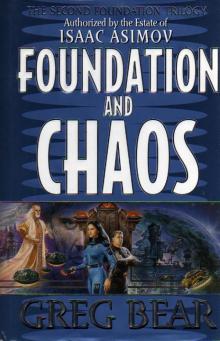 Foundation and Chaos
Foundation and Chaos Halo: Silentium
Halo: Silentium Blood Music
Blood Music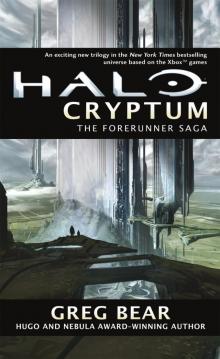 Halo: Cryptum
Halo: Cryptum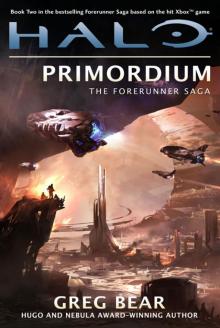 Halo: Primordium
Halo: Primordium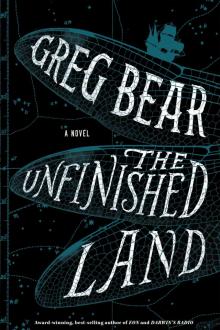 The Unfinished Land
The Unfinished Land Hardfought
Hardfought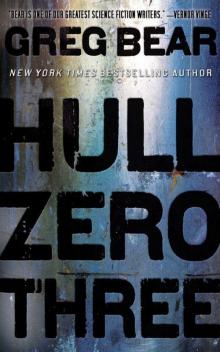 Hull Zero Three
Hull Zero Three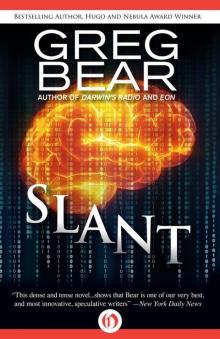 Slant
Slant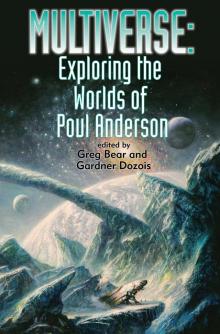 Multiverse: Exploring the Worlds of Poul Anderson
Multiverse: Exploring the Worlds of Poul Anderson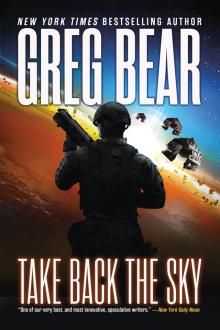 Take Back the Sky
Take Back the Sky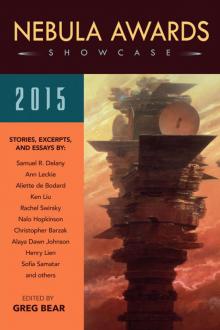 Nebula Awards Showcase 2015
Nebula Awards Showcase 2015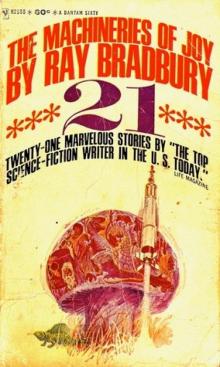 Machineries Of Joy
Machineries Of Joy A Martian Ricorso
A Martian Ricorso Eternity
Eternity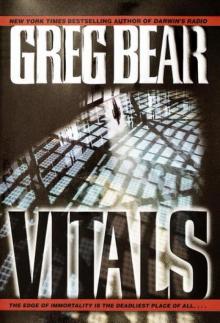 Vitals
Vitals The Infinity Concerto
The Infinity Concerto Beyond the Farthest Suns
Beyond the Farthest Suns Moving Mars
Moving Mars Quantico
Quantico Darwin's Radio
Darwin's Radio Beyond Heaven's River
Beyond Heaven's River Star Wars - Rogue Planet
Star Wars - Rogue Planet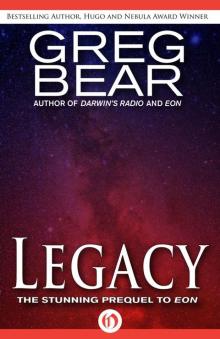 Legacy (Eon, 1)
Legacy (Eon, 1) War Dogs: Ares Rising
War Dogs: Ares Rising Sisters
Sisters Dead Lines
Dead Lines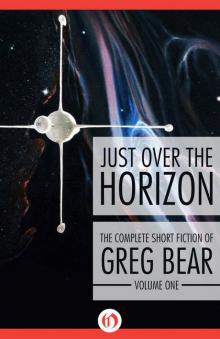 Just Over the Horizon (The Complete Short Fiction of Greg Bear Book 1)
Just Over the Horizon (The Complete Short Fiction of Greg Bear Book 1) Eon (Eon, 2)
Eon (Eon, 2) Venging
Venging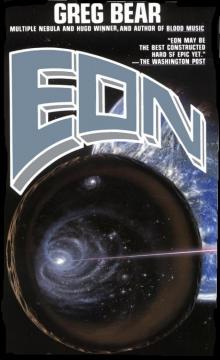 Eon
Eon City at the End of Time
City at the End of Time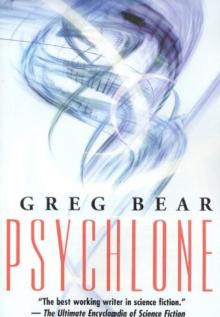 Psychlone
Psychlone Dead Lines, A Novel of Life... After Death
Dead Lines, A Novel of Life... After Death Eternity (Eon, 3)
Eternity (Eon, 3) Cryptum
Cryptum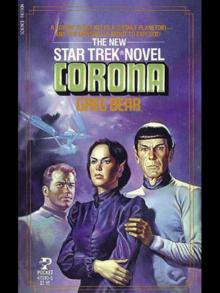 Corona
Corona Sleepside: The Collected Fantasies
Sleepside: The Collected Fantasies Women in Deep Time
Women in Deep Time Queen of Angels
Queen of Angels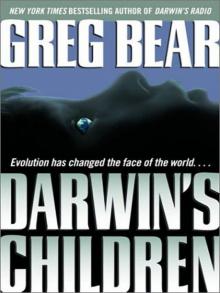 Darwin's Children
Darwin's Children Dinosaur Summer
Dinosaur Summer The Forge of God tfog-1
The Forge of God tfog-1 Foundation and Chaos f-9
Foundation and Chaos f-9 Star Wars: Rogue Planet
Star Wars: Rogue Planet The Forge of God
The Forge of God Mariposa
Mariposa Halo: Cryptum: Book One of the Forerunner Saga
Halo: Cryptum: Book One of the Forerunner Saga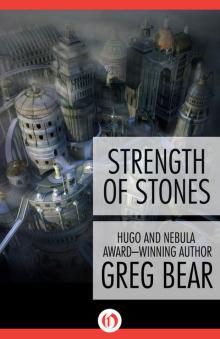 Strength of Stones
Strength of Stones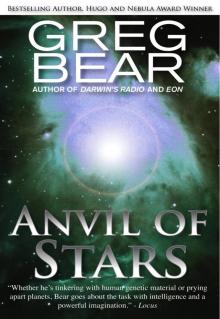 Anvil of Stars
Anvil of Stars B00AQUQDQO EBOK
B00AQUQDQO EBOK Anvil of Stars tfog-2
Anvil of Stars tfog-2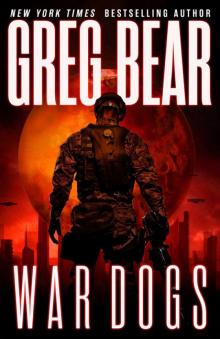 Ares Rising 1: War Dogs
Ares Rising 1: War Dogs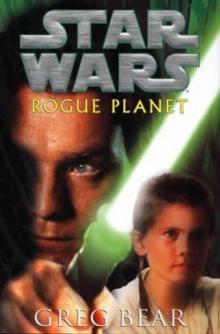 Rogue Planet (star wars)
Rogue Planet (star wars) The Machineries of Joy
The Machineries of Joy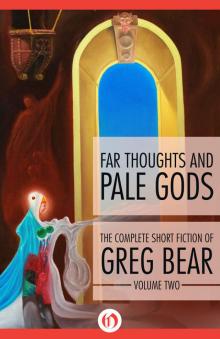 Far Thoughts and Pale Gods
Far Thoughts and Pale Gods Songs of Earth and Power Omnibus
Songs of Earth and Power Omnibus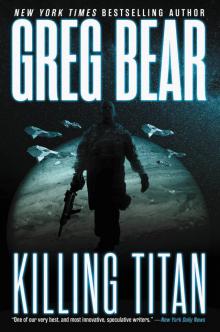 Killing Titan
Killing Titan Darwin's Radio d-1
Darwin's Radio d-1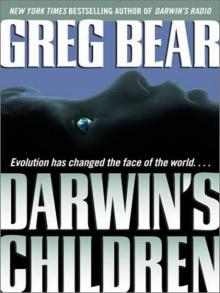 Darwin's Children d-2
Darwin's Children d-2